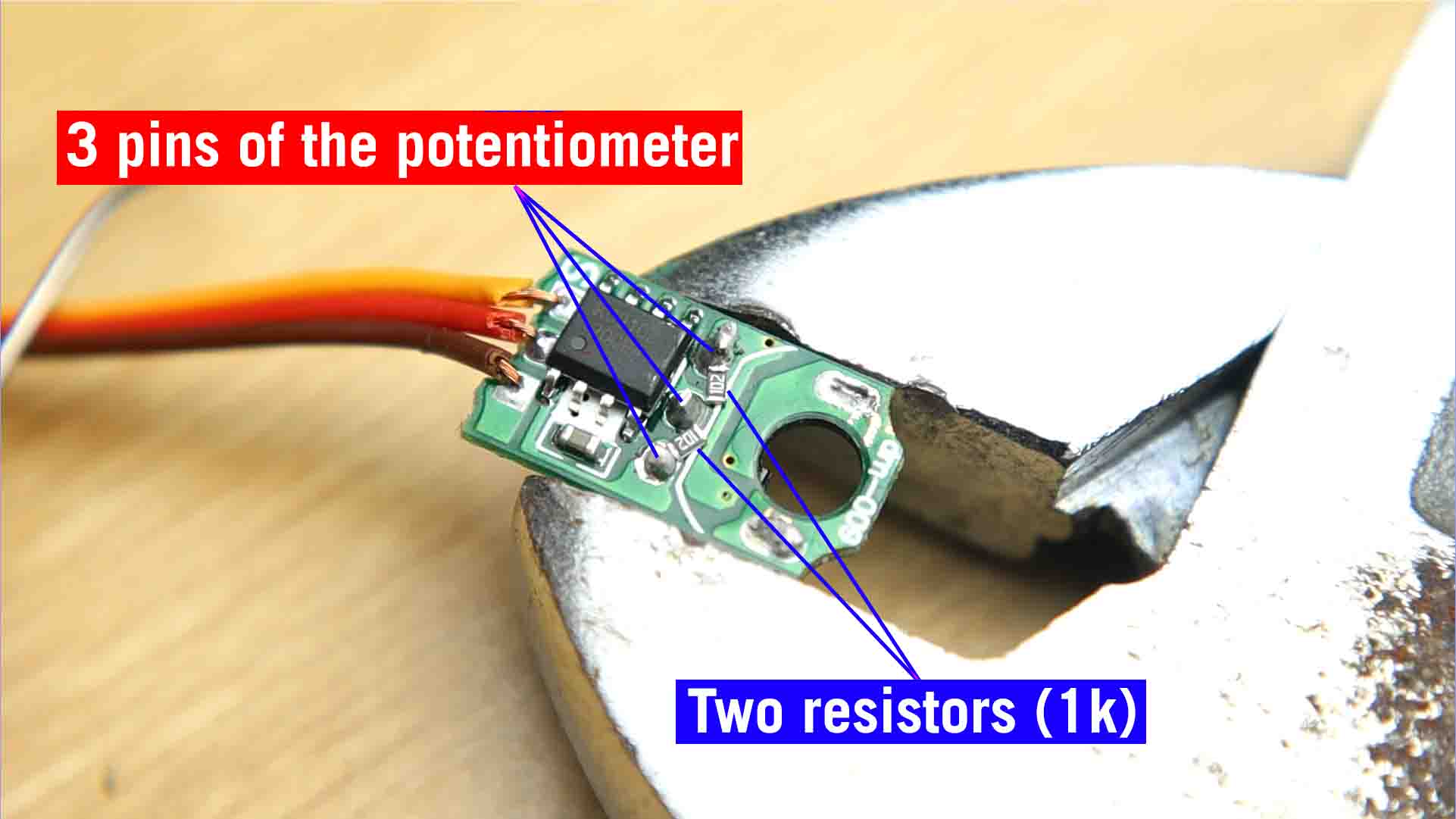Are you building a toy and need an ESC to drive your DC motor, but you can't find a small size ESC for your DC motor? Here is the simplest solution: build it from a servo.
A servo consists of a DC motor, a bidirectional ESC with a potentiometer, and gears. The main difference between a brushed ESC and an ESC board in a servo is that a brushed ESC has no potentiometer. The potentiometer in a servo is responsible for capturing the angle of the main shaft and using this information as an additional input to the ESC. This means that even if you send the same signal to the ESC, but with a different angle of the main shaft, your DC motor will run at a different speed or even in a different direction.

To make the board behave similar to a normal brushed ESC, you need to disable this feature by removing the potentiometer and replacing it with two equal resistors. There is no specific value required for the resistor. You can use any resistor from 330 ohms to 2 kilohms.
Here are the steps involved in converting a servo to a brushed ESC:
1. Remove the potentiometer from the servo.
2. Solder two equal resistors in place of the potentiometer.
3. Connect the motor to the ESC board.
4. Connect the ESC board to a power supply.
Once you have completed these steps, your servo will now function as a brushed ESC. You can use it to drive any DC motor that is compatible with the ESC. Here is a demonstration of converting the SG90 servo to a brushed ESC and using it for a RC boat:
In the video, you can see how the SG90 servo is converted to a brushed ESC by removing the potentiometer and replacing it with two equal resistors. The ESC is then connected to a DC motor and a power supply. The motor is then used to drive the RC boat.
This is a simple and effective way to convert a servo to a brushed ESC. If you are looking for a small and inexpensive ESC for your DC motor, this is a great option.